If the idea that Organ Pipe Cactus National Monument is just a hot, cactus-studded drive-through is true, you’ll find out fast once you camp here. You’ll learn practical ways to pick between Twin Peaks, Alamo Canyon, group sites, or backcountry zones, how permits work, and what gear and water planning actually look like. There’s solitude and striking scenery ahead — and a few rules you’ll want to know before you set up camp.
About the Organ Pipe Cactus and Where to See It
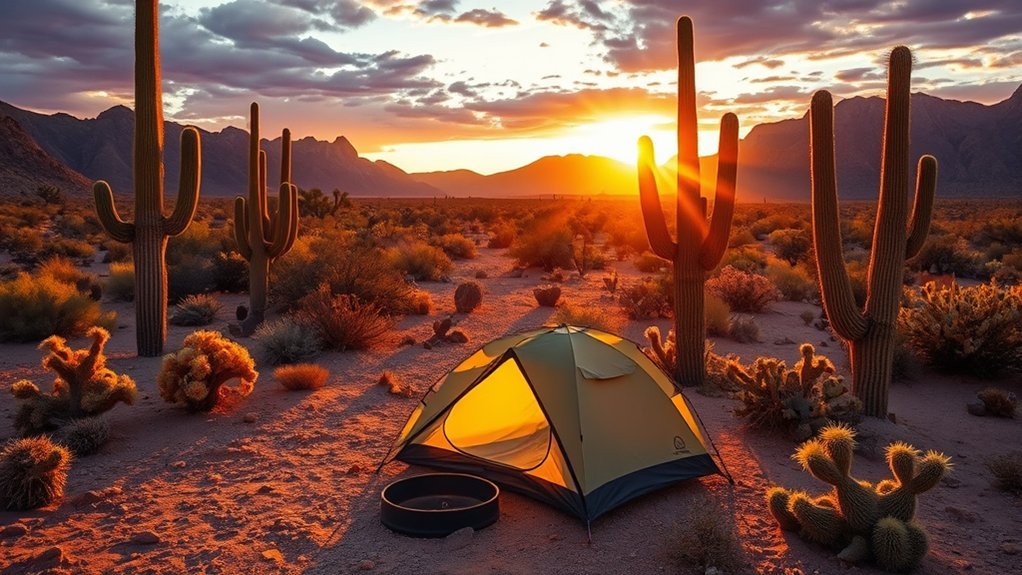
The Organ Pipe cactus, Stenocereus thurberi, stands out with tall, pipe-like arms and can reach about 16 feet high and 12 feet wide, though it grows very slowly—often taking a decade to add only a few inches and sometimes not sprouting its first stems until around age 30. You’ll spot Organ Pipe cacti blooming at night in May and June, relying on lesser long-nosed bats for pollination, so plan evening outings. For reliable viewing, head to Twin Peaks campground and explore nearby hiking trails and the Desert View loop. Senita Basin offers additional desert flora contrast. Treat the campground and trails in the park as sensitive habitat: carry a water source, stay on marked hiking trails, and observe without disturbing wildlife or plants.
Campgrounds: Twin Peaks, Alamo Canyon, and Group Sites
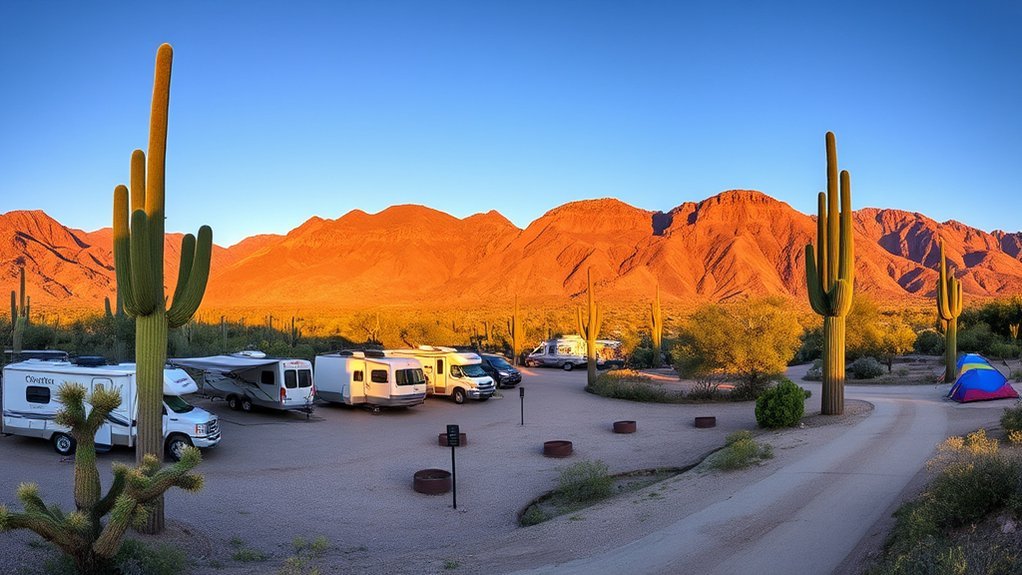
If you want to base your visit among those towering Organ Pipes, plan to camp at one of the park’s developed sites or a few primitive options nearby. You’ll find Twin Peaks Campground as the primary option for RVs and trailers — 208 sites (174 RV, 34 tent) with a nightly fee of $20 ($10 with a senior pass). Alamo Canyon Campground is primitive, four tent-only sites at $16 per night; no RVs or trailers fit there. Make reservations via recreation.gov for both campgrounds to guarantee a spot. Twin Peaks includes five group sites (6–40 people); Group Site 2 allows RVs/trailers up to 40′. Follow camping regulations and secure backcountry camping permits separately if you plan overnight zones.
Backcountry Camping Zones, Permits, and Regulations
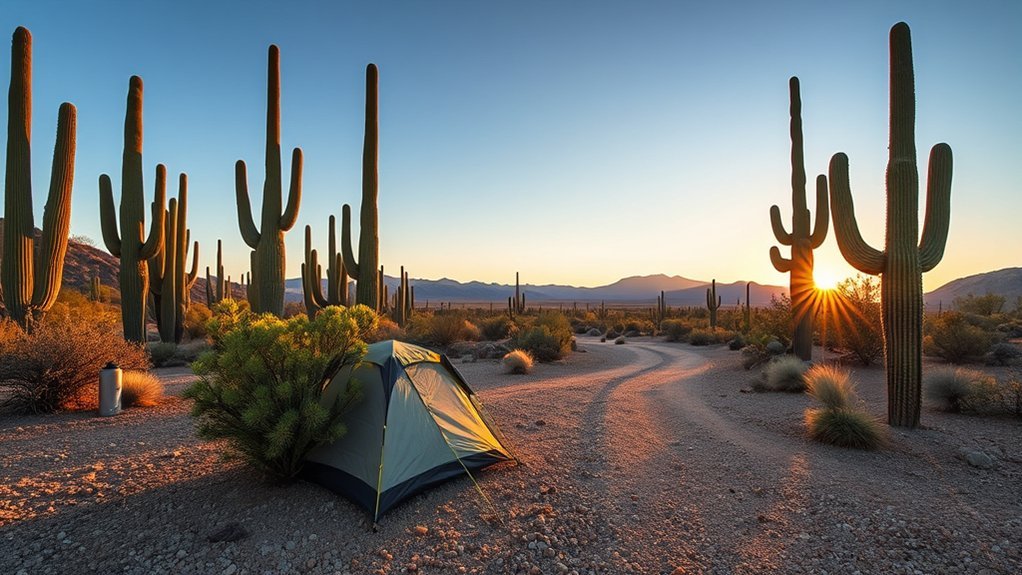
Because backcountry spots are limited and fragile, you’ll need a permit to camp in any of Organ Pipe’s nine designated backcountry zones. You get permits at the Kris Eggle Visitor Center for $5 per zone; they allow up to 7 nights, with no more than 2 consecutive nights at one site. For minimal environmental impact, set up at least ½ mile from roads, historic sites, or water.
| Rule | Requirement |
|---|---|
| Permit cost | $5 at Kris Eggle Visitor Center |
| Stay limit | 7 nights total |
| Site distance | ≥ ½ mile from sensitive areas |
| Fire policy | No campfires; use stoves/canned heat |
Pack out all trash, follow Leave No Trace, and bury human waste in a 6″ cat hole.
Essential Desert Camping Gear and Safety Tips
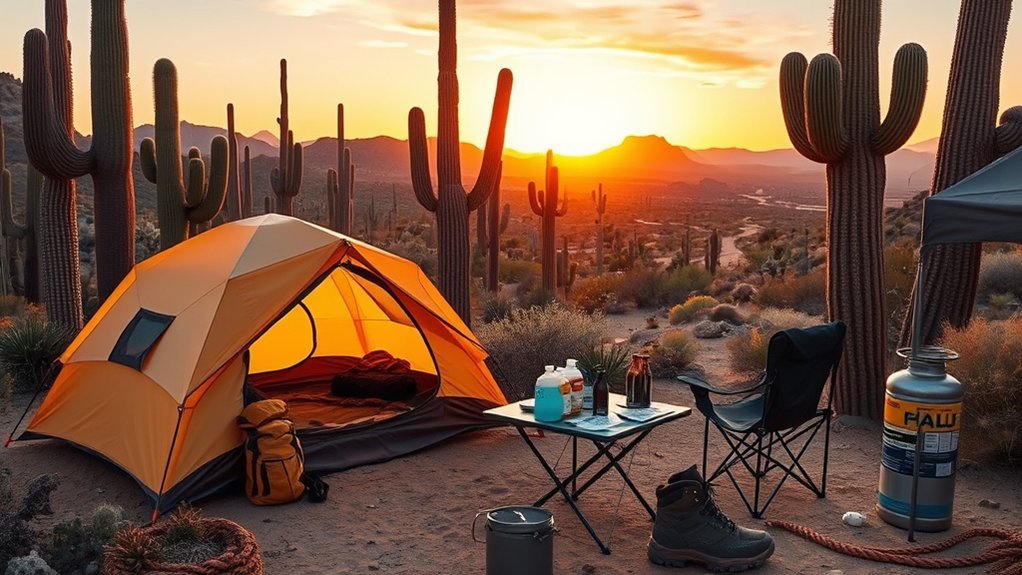
Now that you’ve got your permit and picked a backcountry zone, gear and safety take over—what you bring and how you use it will determine whether your trip stays comfortable and safe. Pack essential gear: a high-quality tent, a reliable stove (campfires are prohibited), and at least 1 gallon of water per person per day. Bring a thorough first aid kit and tweezers for cactus spines; check pets and gear after hikes. Use a black light to check for nocturnal creatures like scorpions around your campsite. Protect your vehicle from packrats by propping the hood and using puck lights in the engine compartment. Pack out all trash and toilet paper, follow Leave No Trace, and brief your group on desert risks and night routines.
Hiking Routes, Dog-Friendly Trails, and Wildlife Awareness
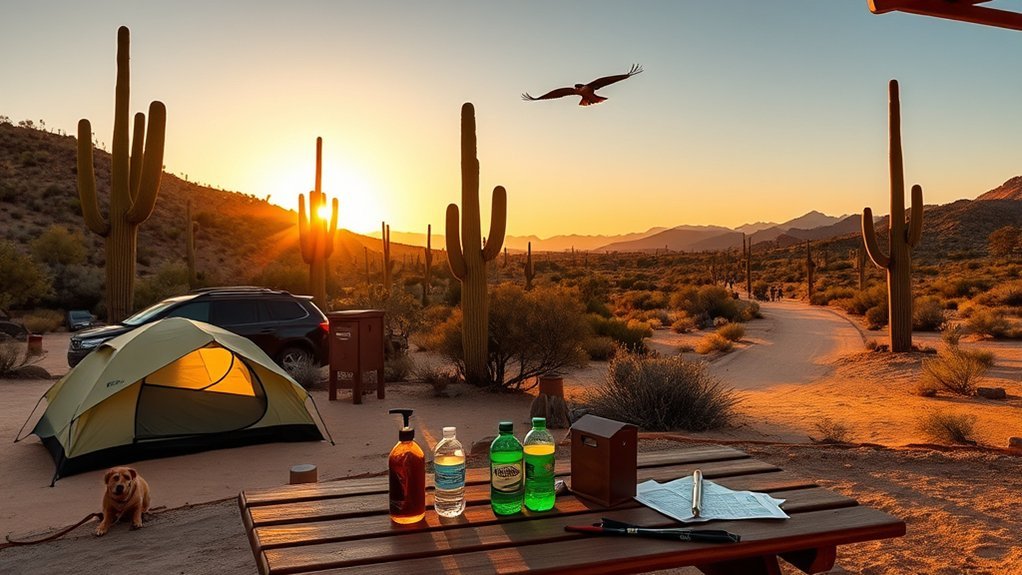
When you head out on Organ Pipe’s trails, plan routes and gear with desert conditions and wildlife in mind: the monument offers over 28 miles of established paths with moderate grades and easy access from campgrounds like Twin Peaks, but heat, thorny vegetation, and sensitive species mean you should carry ample water, wear long sleeves and sturdy pants, keep dogs leashed on designated routes such as the 1.3-mile Palo Verde Trail and the 1-mile Campground Perimeter Trail, and give all animals—like the Quitobaquito desert pupfish and Sonoyta mud turtle—plenty of space to avoid harm to them and to yourself.
- Choose morning hikes to avoid midday heat.
- Bring ample water and electrolytes.
- Wear protective clothing and sturdy boots.
- Keep dogs on leash on dog-friendly trails.
- Photograph wildlife from a distance; don’t disturb.
Plan routes, respect wildlife awareness rules, and your camping and hiking trails experience will be safer and richer.
Frequently Asked Questions
Are There Potable Water Fill Stations Near the Campgrounds?
Yes — you’ll find limited potable water availability at some campground facilities; check the visitor center for current status and local regulations. Pack extra water for hiking trails, wildlife encounters, and general desert safety.
Is Dispersed Car Camping Allowed Outside Designated Sites?
No — you can’t disperse; you must use designated sites. Respect dispersed camping regulations, follow permitted camping areas, limit environmental impact, practice camping etiquette, heed safety precautions, follow wildlife interactions guidelines, and use Leave No Trace best practices.
Are Campfire Rings or Wood Provided at Sites?
No — you won’t find campfire rings or supplied wood; campfire regulations require you to bring fuel or use provided metal rings where available, follow firewood availability rules, site maintenance, safety guidelines, environmental impact, local wildlife, camping etiquette.
What Phone Carrier Has the Best Signal in the Monument?
Mostly minimal; Verizon maintains the most reliable signal. You’ll find cellular coverage varies—signal strength favors Verizon in remote spots. Carrier comparison and user experiences highlight best providers for network reliability and remote connectivity practicality.
Are Seasonal Closures for Roads or Sites Common During Monsoon?
Yes — during monsoon season you’ll often face temporary road closures and reduced park accessibility; monitor weather patterns, check road conditions, heed safety precautions, adjust plans for visitor experiences, and respect wildlife impacts to stay safe and flexible.
Conclusion
You’ve got the facts and the feel of Organ Pipe Cactus National Monument—now go see it. Pitch your tent at Twin Peaks or keep it simple at Alamo Canyon, or wander into a backcountry zone with a permit. Pack plenty of water, a stove (no campfires), maps and common sense, and respect wildlife and night skies like a pilgrim under a gas lamp. Stay safe, follow limits, and savor the desert’s quiet rewards.

